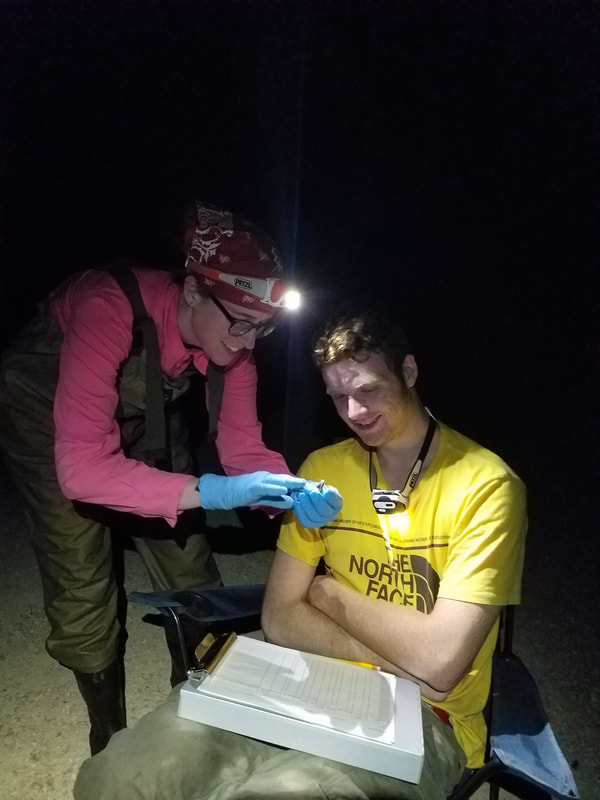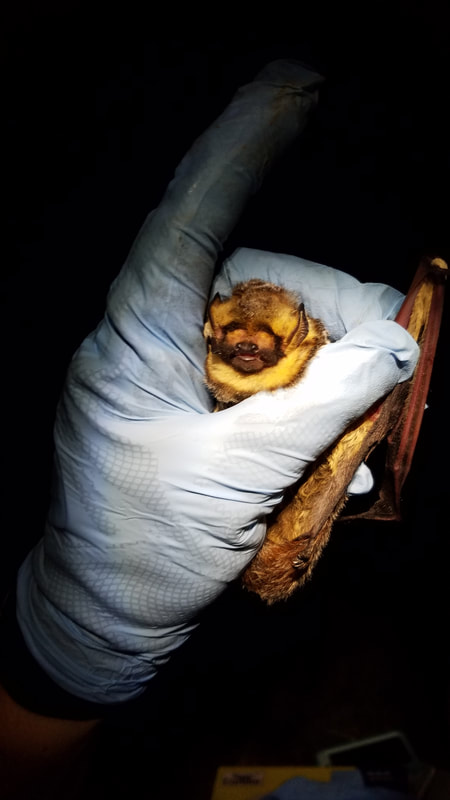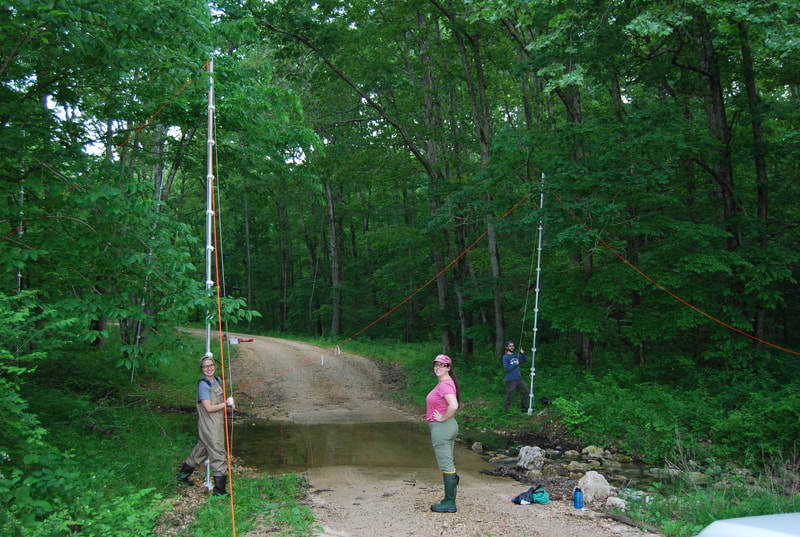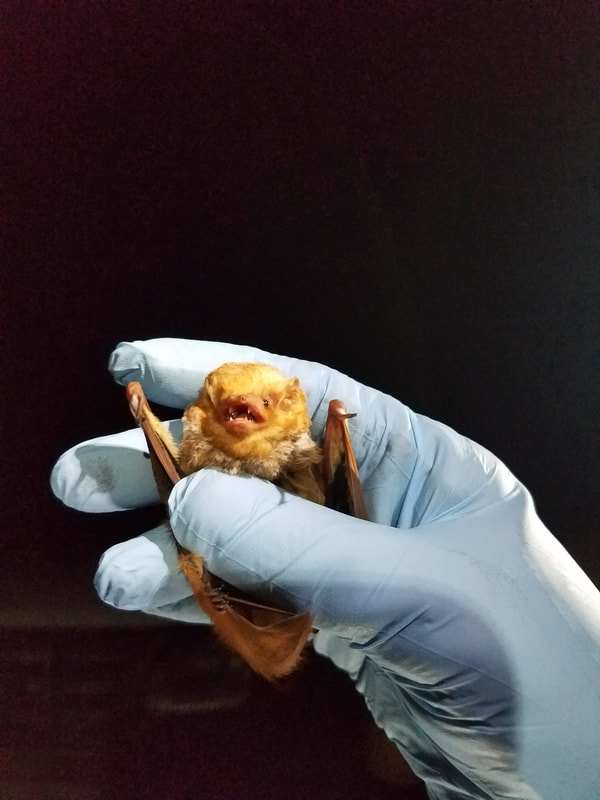There is a heightened need for updated information during the maternity season for tricolored (Perimyotis subflavus), little brown (Myotis lucifugus), and northern long-eared (Myotis septentrionalis) bats. Knowledge of roost characteristics and associated habitat are critical as the statewide populations have decreased dramatically in the last few years due to WNS; therefore, understanding the resource needs of remaining maternity colonies will allow the Missouri Department of Conservation (MDC) to better protect these critical resources in order to further promote success of these species. Primary objectives are to conduct mist-net surveys and to place radio transmitters on reproductively active female bats to document maternity colony size, location, maternity roosts, and summer habitat in southeastern Missouri.
Collaborators: Dr. Kathryn Womack (formerly MDC) & Amy Hammesfahr (Graduate Student)
Funding: Missouri Department of Conservation
Publications:
Collaborators: Dr. Kathryn Womack (formerly MDC) & Amy Hammesfahr (Graduate Student)
Funding: Missouri Department of Conservation
Publications:
- Hammesfahr, A., Rega-Brodsky, C.C., Womack-Bulliner, K., & Whitney, J. 2022. Optimizing surveys for imperiled bat species post white-nose syndrome. Acta Chiropterologica, 24(2), 395-403. DOI 10.3161/15081109ACC2022.24.2.009
- Hammesfahr, A., Rega-Brodsky, C.C., Womack-Bulliner, K., & Whitney, J. 2022. Roost characteristics of a tricolored bat Perimyotis subflavus in the Missouri Ozarks. Transactions of the Kansas Academy of Science, 125(3-4), 159-164. DOI 10.1660/062.125.0307
- Hammesfahr, A., Rega-Brodsky, C.C., Womack-Bulliner, K., and Whitney, J.E. 2021. Public misunderstandings of bats does not preclude positive attitudes towards bats in Missouri. Transactions of the Kansas Academy of Science, 124(3-4):203-215. DOI 10.1660/062.124.0308
- Hammesfahr Thesis (2020): "Solutions for imperiled bat conservation: Integrating ecology, technology, and the public"






